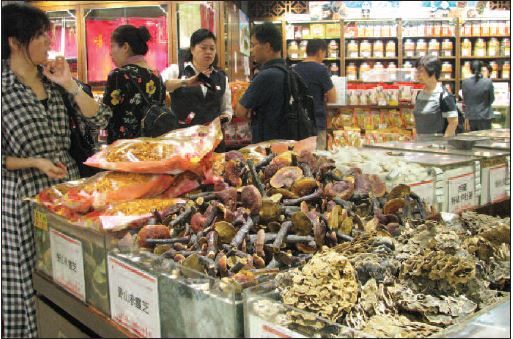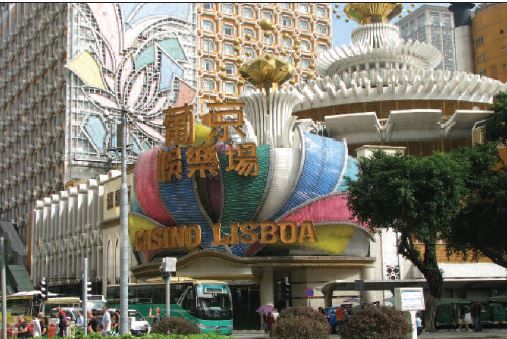Hong Kong: Taste of the East
We think Taiwan is our next holiday destination. Ruti spends late nights on the computer, looking up places, sights, anything interesting – and of course places to stay. Eventually she finds a suitable place in Taipei, the main city, books in for a week, and decides that we will be "free" people for that second week and go wherever we feel like.
Early in November 2018, and we are on our first leg – the EL AL flight to Hong Kong Island. It's an 11-hour flight; from there a short flight to Taiwan.
It turns out that "aiming for Taiwan, we hit Hong Kong." In Hong Kong we hit our first rock: "Sorry, we can't allow you on the flight!"
My passport expiry date is one month short!
I learn that passports must be valid for at least six months before expiring: mine has another five months (and a bit) to go. A rule is a rule – in Hong Kong there is no arguing about rules!
We spend some fruitless hours getting angry, then decide: okay, Hong Kong (actually Kowloon, the "next-door neighbor", near to mainland China) here we come!
It's going to be a "hit-and-miss" holiday – we'll just walk around for our six days there, and what we see, that's it.
We last saw Hong Kong seventeen years ago. We were on our way to a rain forest in Queensland, Australia, to visit our third grandchild.
Today the business city of Hong Kong Island has many new, high buildings (at 7,500+ skyscrapers it holds the world's record for skyscrapers in a city – many of them being 70-80 stories and up).
The city looks respectable and clean. Seventeen years ago we crossed tiny pedestrian bridges over the roads. These have since grown into elaborate high-walled crossings, giving us the possibility of getting safely to the other side of roads which stream with cars and buses day and night.
The traffic situation in next door Kowloon is even worse. Some people walk with cloth masks covering their noses. Maybe the traffic slows down after 3am. I'm asleep, so I don't know.
Many buildings look worn and rundown along the three and a half kilometer arrow known as Nathan Road; tiny air-conditioning boxes stick out of a high building with drab walls. Some buildings need repainting or reconditioning. But, all the same, Hong Kong's tallest building – 108 storeys – is in Kowloon! And the shops along Nathan Road are elegant, well-lit and look expensive. It is a highly-interesting city.
We found good (if slightly expensive) hotels. The first, near the Buddhist temple in Temple Street and the night market, had a free room for one night only. Next day we found an equally good hotel a few minutes walk away, and spent another four nights there, before ending our shortened holiday.
Some warnings about hotels in Kowloon: (1) the prices can fluctuate on a daily basis, depending on what is on in the city on that particular day. The next day the prices may go back to normal. It's worthwhile booking rooms in advance; (2) hotels in Kowloon (and there are many) are almost always fully booked. The amount of tourists in the city (mainly Chinese, from what I saw) is amazing; (3) check the accommodation before booking: in this crowded market there are seedy-looking places being offered as well.
Closing time is closing time! At our second hotel the breakfast (part of the price) is advertised as "until 11am". On our first morning we get there a few minutes before 11, only to have the vacuum cleaner operator and table clearers around us start their work at exactly 11am. Thereafter we made sure to be up there (19th floor) at least half an hour earlier.
Our days are interesting: we choose to walk along different streets. The holiday turns into a real "walk-about".
First is the neighboring Buddhist temple: the modest building has several outside doors, each leading to a small room. These are filled with incense from scores of thin, circular incense burners hanging from the ceiling, and colorful walls, predominantly red and gold, and statues of Buddha. While we are there, women come in to pray and light their own incense sticks.
The temple is in a fairly large and paved park, and at night we see homeless people sleep on "mattresses" on the pavement near the building. They are quite safe around the temple building.
Nearby, down some narrow streets, is the night market, open from 7 - 11pm. We walk through stalls spread out all over the crowded streets. We stop at small eating places, with tables and chairs along the pavement (the food is okay!). In another small street is a line of small square tents, one next to the other and flowing around the street corner. In each tent sits a fortune teller, and we see the occasional customer come in to check up on his/her future.
On our walks we pass rest areas for pedestrians. Lawns with benches or just a pavement corner next to the main road: all are equipped with benches and chairs for walkers to relax in. And not far off the main road we would come to a large, quiet park. In one park a "squad" of women carry out exercises to the sound of recorded music. They move in unison, and we sit in the park for a long time, watching this "exercise ballet".
Late one evening, at the bottom of Nathan Road, we reach the ferry area. We walk up some stairs to a "look-out" point: sit down and watch the multi-colored light "show" of the immense buildings on the other side of the water between Kowloon and Hong Kong Island. Despite the late hour, the crowds of people around us include little children, who run around freely in the spacious area.
On the way back to the hotel late at night and along a different route, we stop over at a small eatery where, with our soup, the proprietor brings us some wine in tiny glasses – on the house. We finish our drinks and he brings us a second round. Not far from us a girl steps out from a crowd of noisy youngsters, and offers us a bottle; Ruti thanks her, but we – reluctantly – don't take it. After all, we still have to get home!
Next day we walk in another direction in Nathan Road. Off the main road we discover a quiet area: a well-kept suburb built around the Lutheran Church and the Lutheran girls' school (this last being higher up on a mountain road). The low buildings in this area are neat, clean and modern. It feels like we're in a different city.
Going up that mountain road we find a turn-off leading to a natural park. No traffic sights or sounds – only birds flying in the tall trees, and flocks of doves. We sit on a bench, breathe in the good air; we finish by climbing up steps higher up the mountain, before walking down the other side and "back to reality".
At restaurants we are served large portions. I enjoyed the corn soup (enough for six people, but we manage to finish the lot). I don't particularly like seafood but Ruti – a good cook – enjoys the cuisine. We drink Chinese beer at an English-style pub, while sitting on stools at a long counter overlooking the pavement. Terrific.
Day three – we go to Macao, another independent island, this one with an unusual gambling casino, Casino Lisboa, one of the many casinos on this island. On its way the ferry passes small but hilly islands, some with only trees and rocks; others with a few scattered buildings.
After a short ride we reach Macao. The island was once a Portuguese colony, and still shows signs of the Portuguese presence. Here we find some lovely, stylized and colorful apartment houses not far from the remains of St. Paul's Cathedral. This last consists of a well-shaped, three-storey high front wall – and that's it. Except for some concrete steps nothing else remains of the building.
The wall is on top of a hill swarming with tourists. As usual, practically everyone is Chinese.
The pedestrians-only street leading to the hilltop has food stalls, one after another. They offer free chunks of food to the passing crowd, and we pick up a few tasty "samples".
On our way down, Ruti buys a bowl of soup with fish balls and noodles from one of the many stalls along the street. We sit on a concrete structure in the middle of the street and start sharing the soup. A woman serving in a stall across the way sees us struggling to spoon up the long, long noodles and quickly brings us a fork. Don't worry, I returned it afterwards!
The Casino Lisboa is a "must-see" in down-town Macao. It is a large, low building with a spreading dome roof covered in colored lights: the roof consists of thousands of small and glittering v-shaped pieces beautifully fitted together.
Inside the building we walk into an immense hall decorated with long ribbons of lights high above the crowd. The people are dwarfed by the high roof and spaciousness around them. They place their bets in a holiday spirit: meanwhile a semi-nude performer does her act on a stage on one side of the hall, all this being accompanied by a background of music.
Eventually we continue our walk. Not far away from all this fun and noise we discover a normal-looking building which turns out to be a "serious" casino. It is a place without decorations or funny lights – no music, no color – only a grim silence. The people here (mainly men) sit quietly around a massive table, their attention riveted on their cards. Too serious for me!
We walk to the 17th century hilltop castle, the Fortaleza do Monte. On top we stroll amongst the thirty-two cannons facing in different directions along the walls, and get a birds-eye view of Macao and the harbor.
One more note about Macao: Ruti (a coffee aficionado) has "real coffee" (her highest compliment) at a restaurant on the island.
After this half-day interlude, we return – go through passport control – and choose the ferry back to Hong Kong. A mistake! We should have boarded the Kowloon ferry – eventually, after some walking around in Hong Kong, we find the correct subway train and, at last, arrive back home.
On our last day we take the rail to the top of Victoria Peak, at 552 meters the highest "hill" in Hong Kong; the crowds on top prove too much for us and we walk down along nicely made paths – we pass unusual and interesting flora, and get a birds-eye view of Hong Kong – below us are stacked the tops of gigantic buildings.
At last we return to Israel. It is a good thing we are booked on the flight (as a former EL AL employee this is not always possible for me). We are walking along one of the immense hallways of the airport, looking for a place to buy beer, when a woman in uniform comes running down the passage and breathlessly says to the "two most elderly passengers" she sees: "Come quickly, hurry – your flight is ready to take off!"
So we hurry, and we come back to the "promised land".











Comments